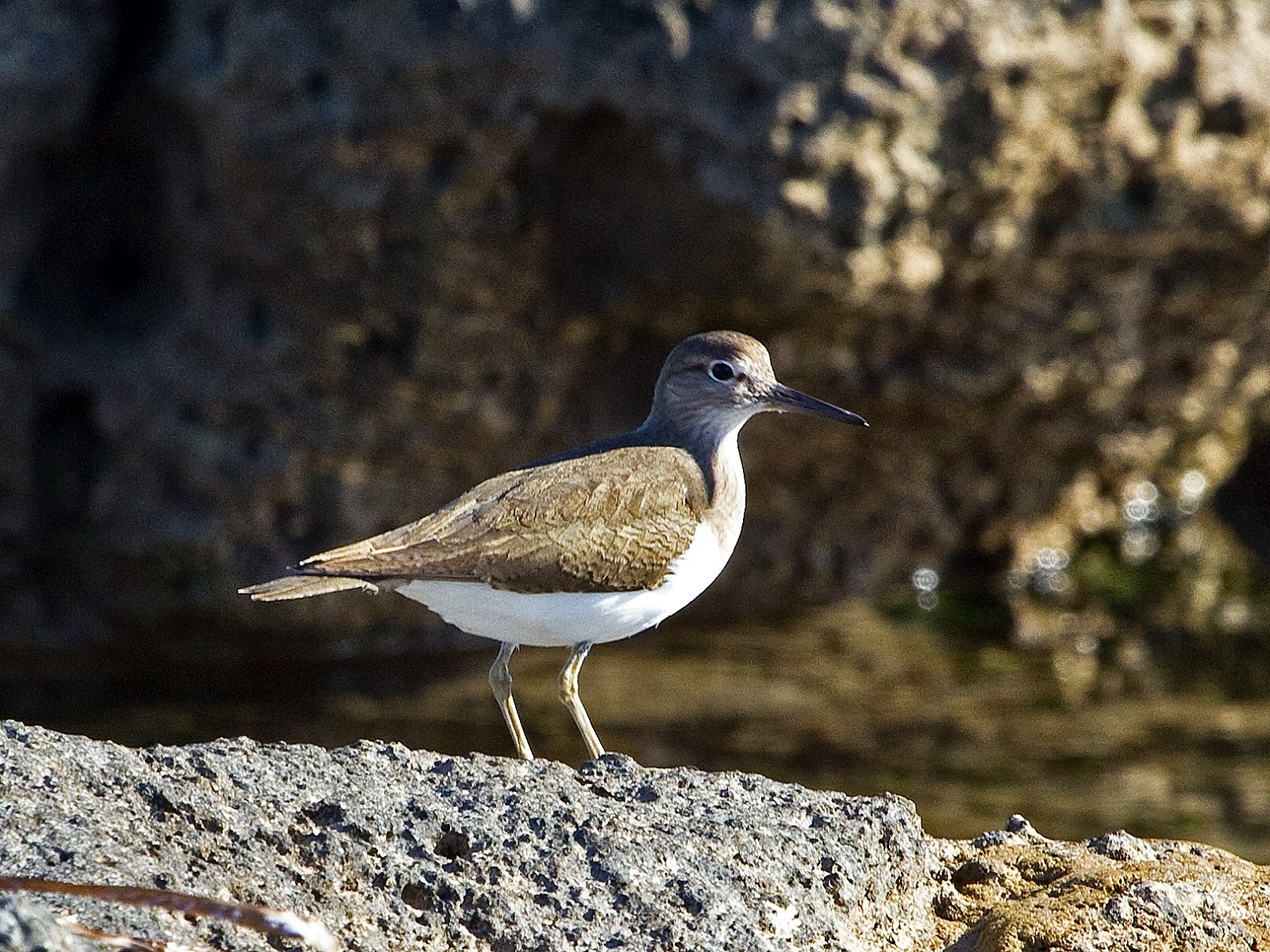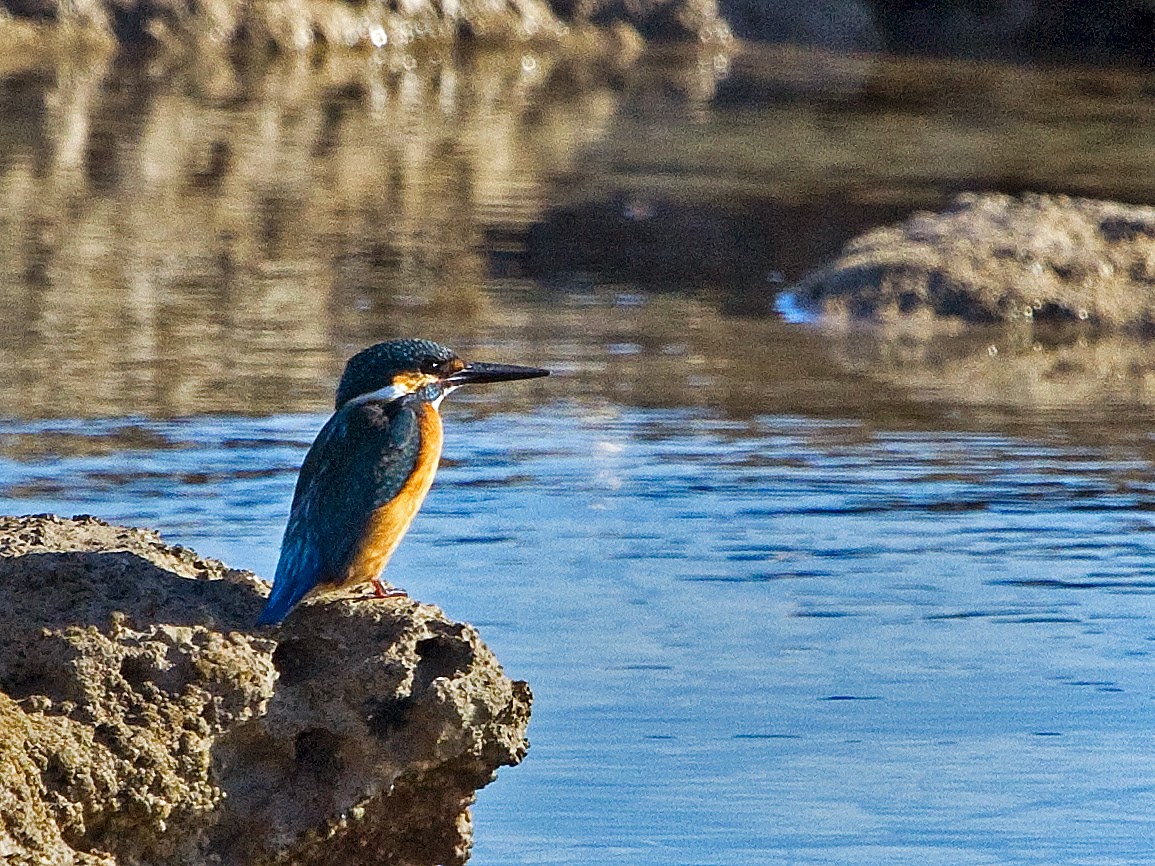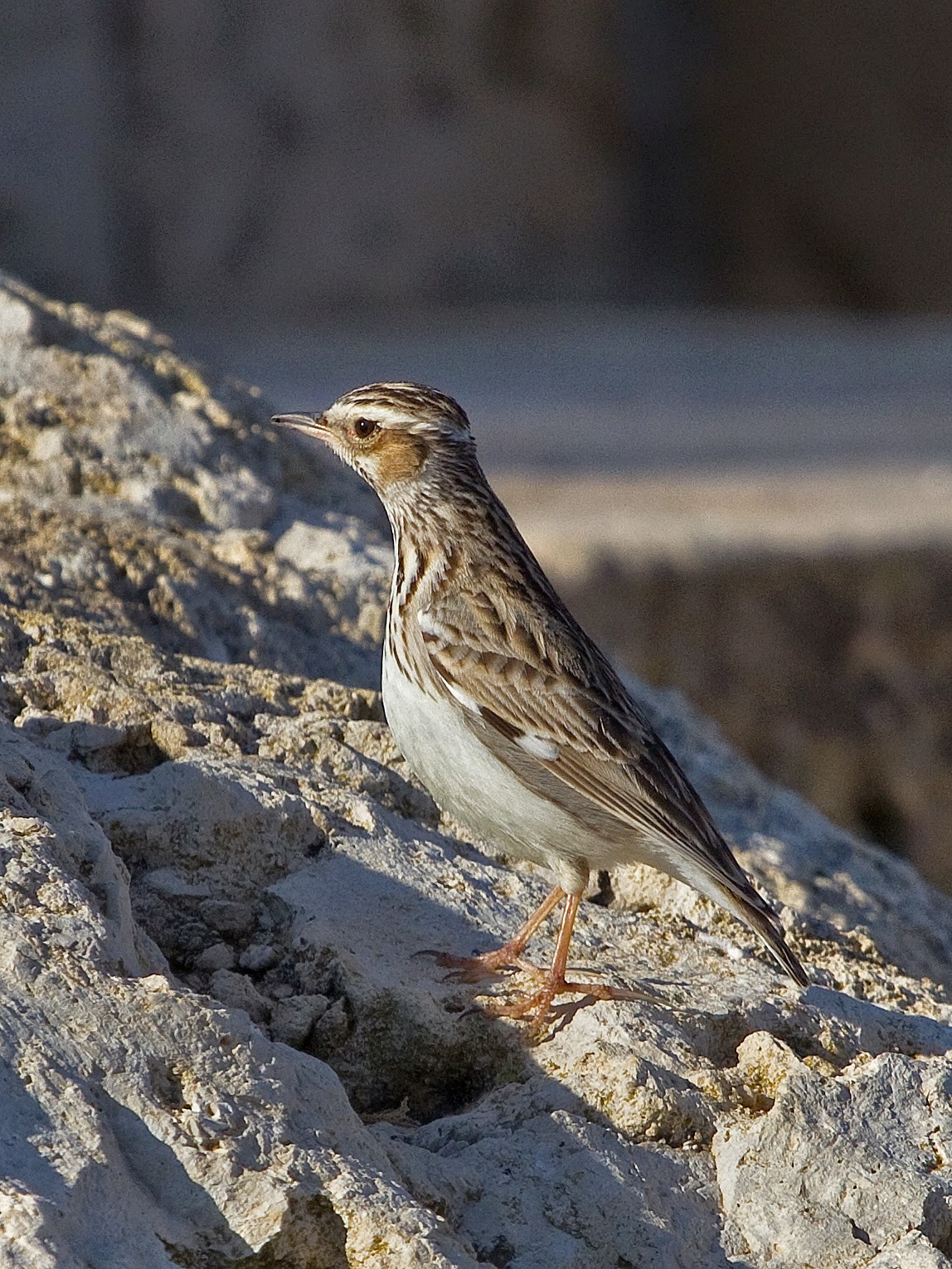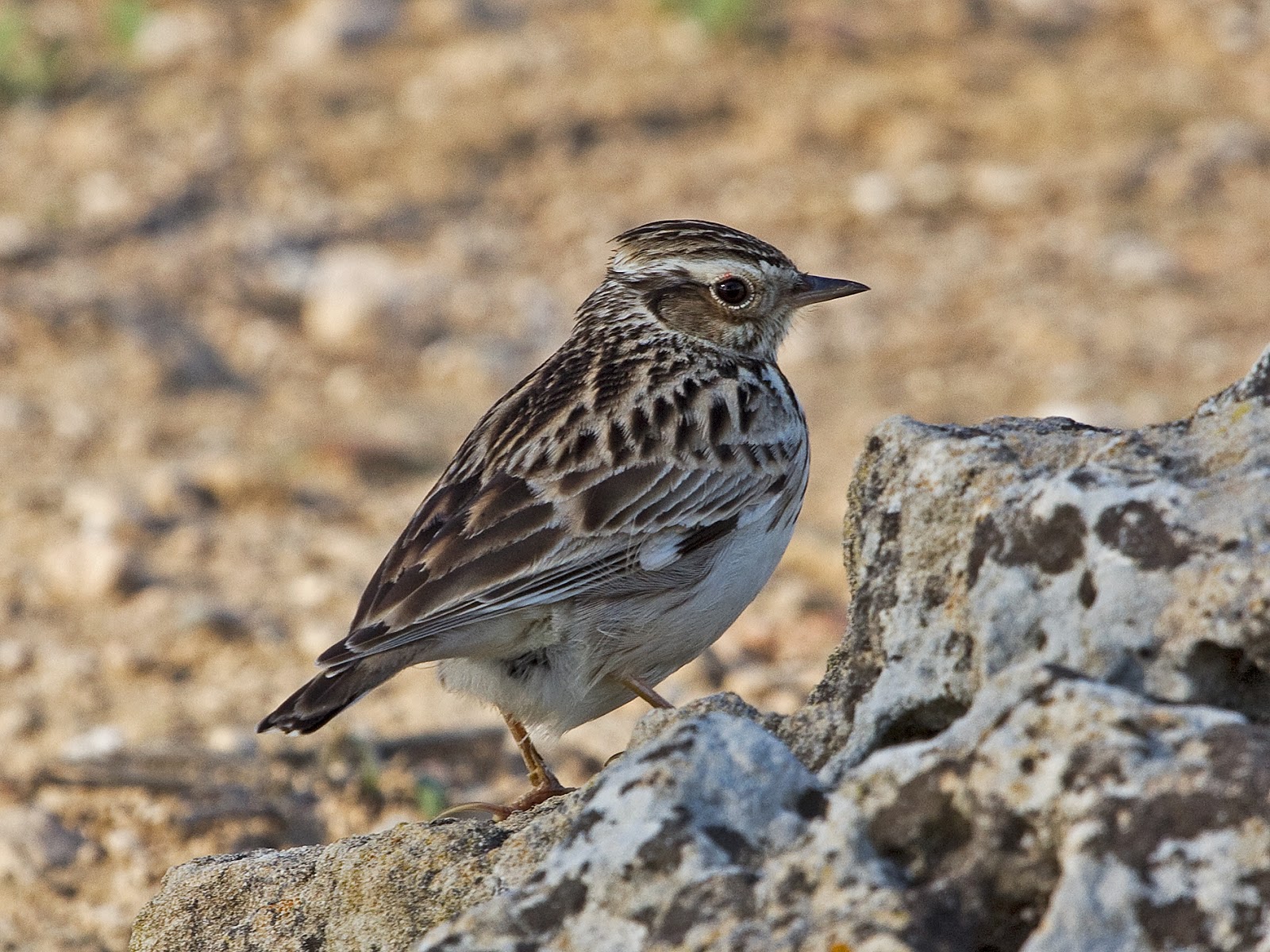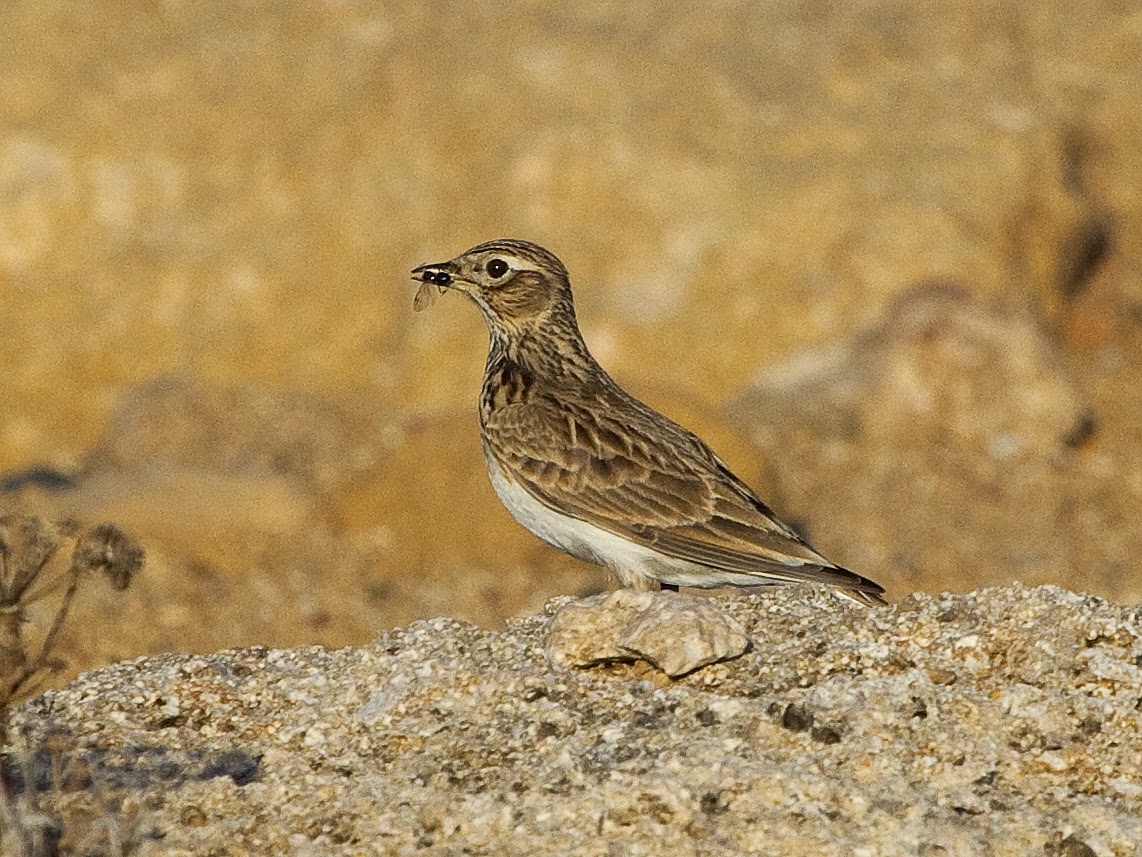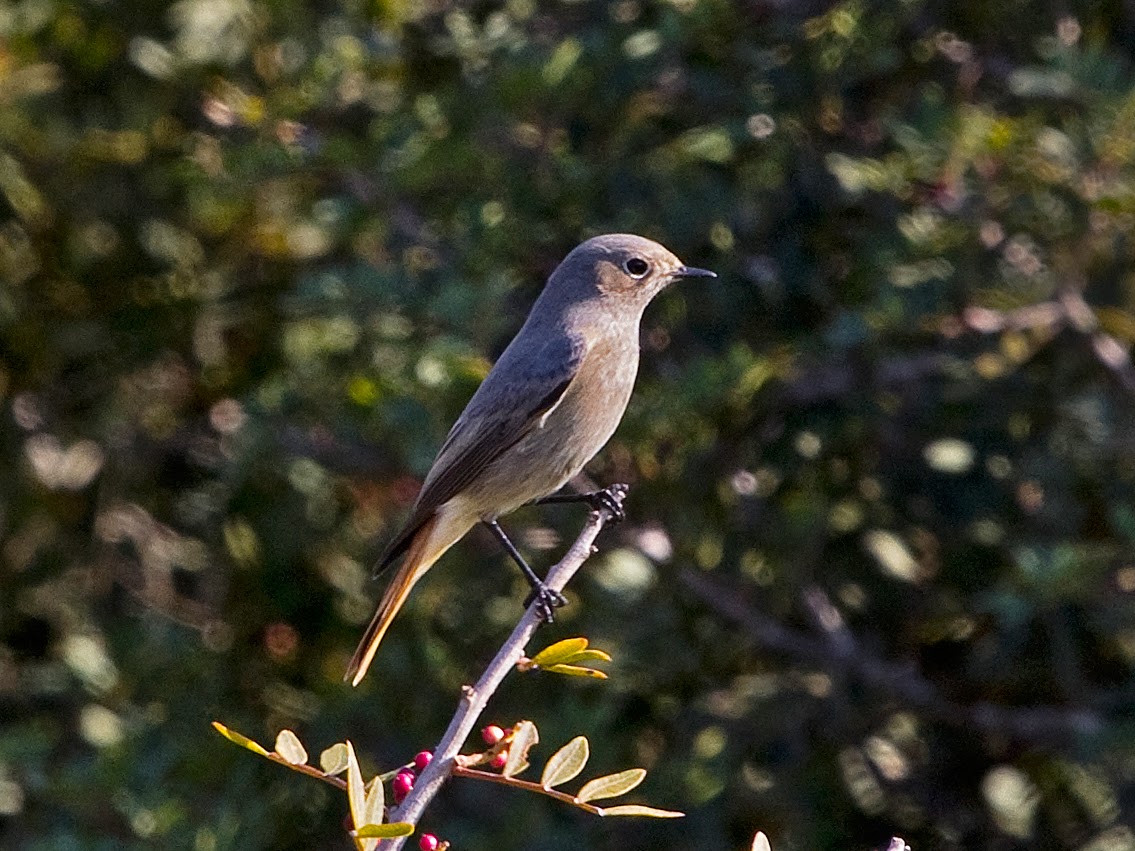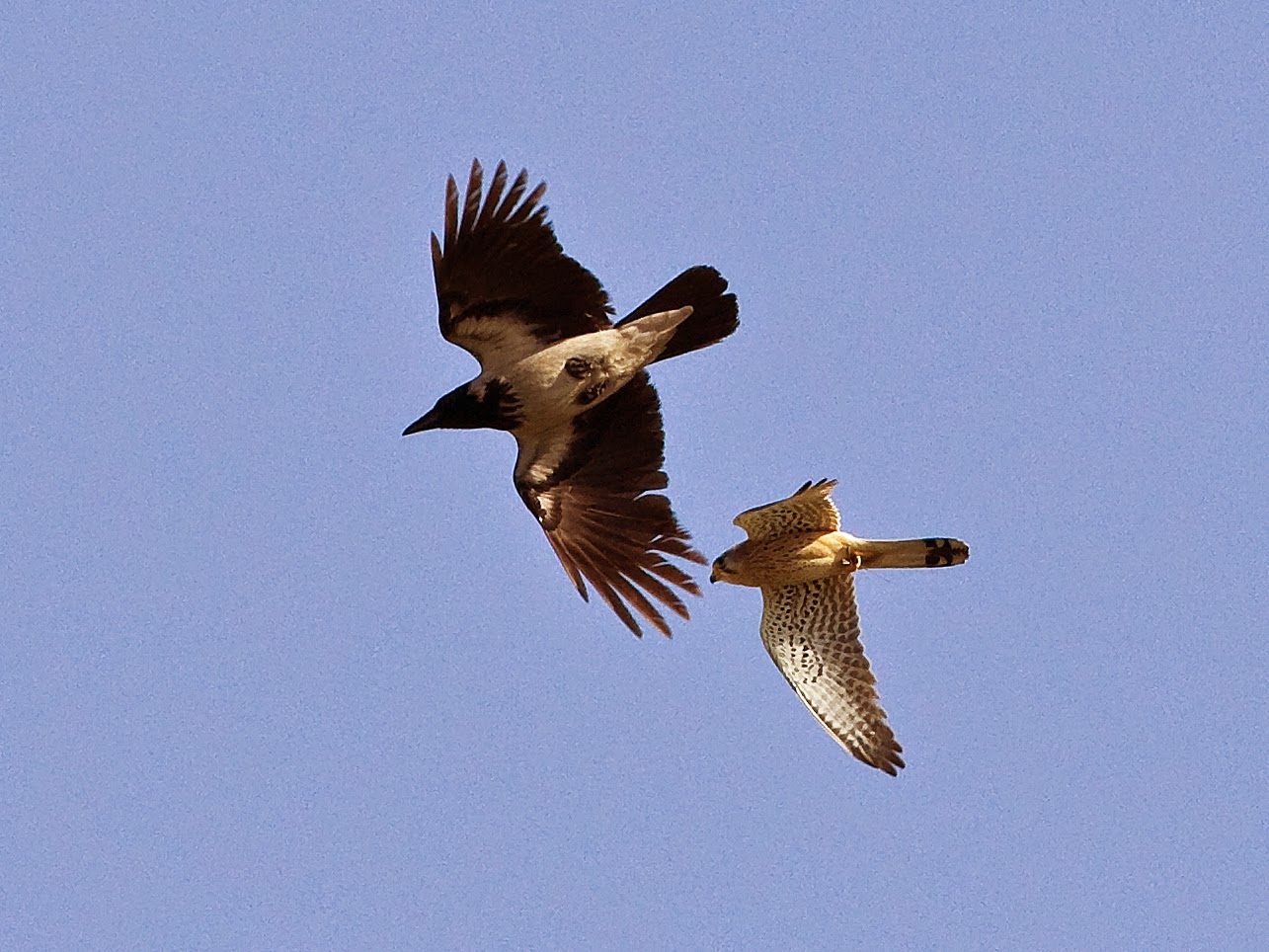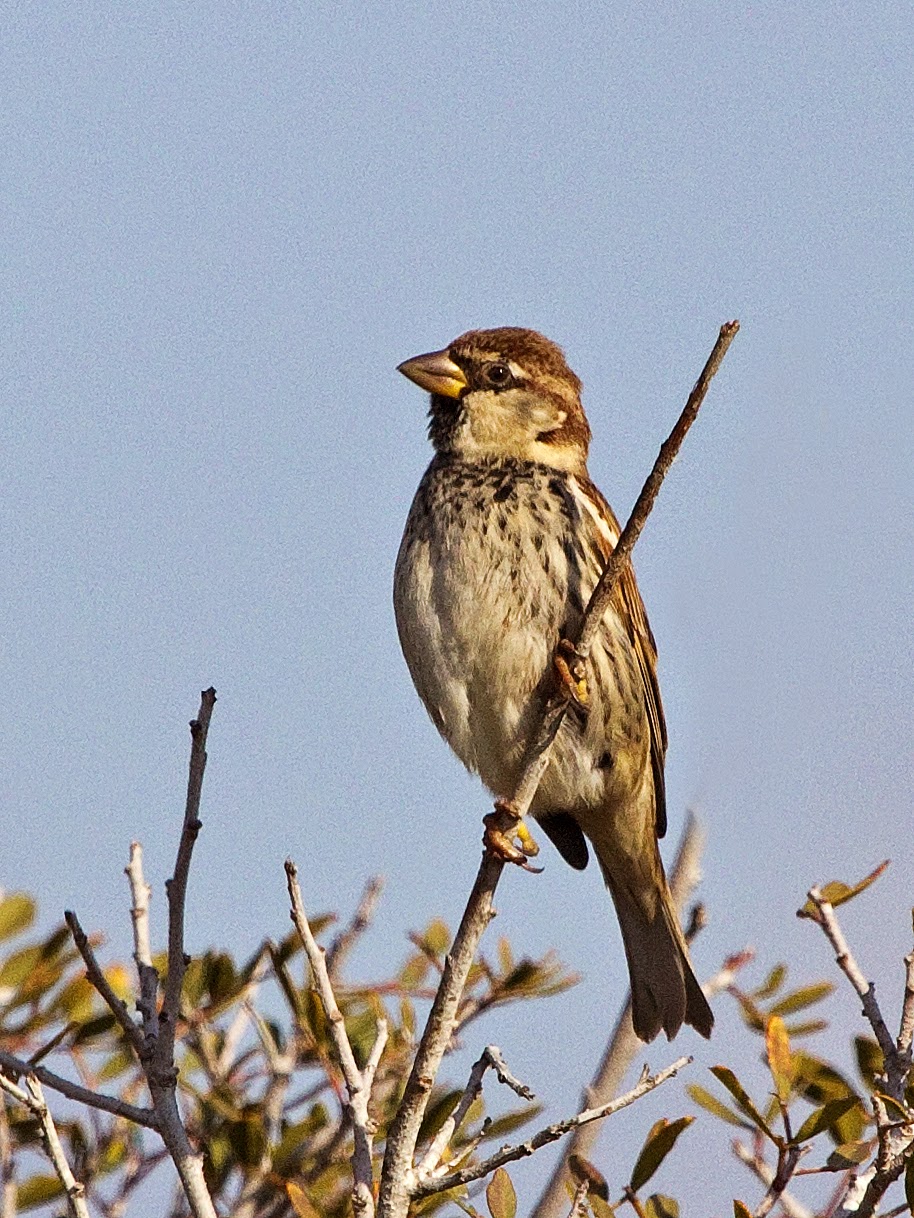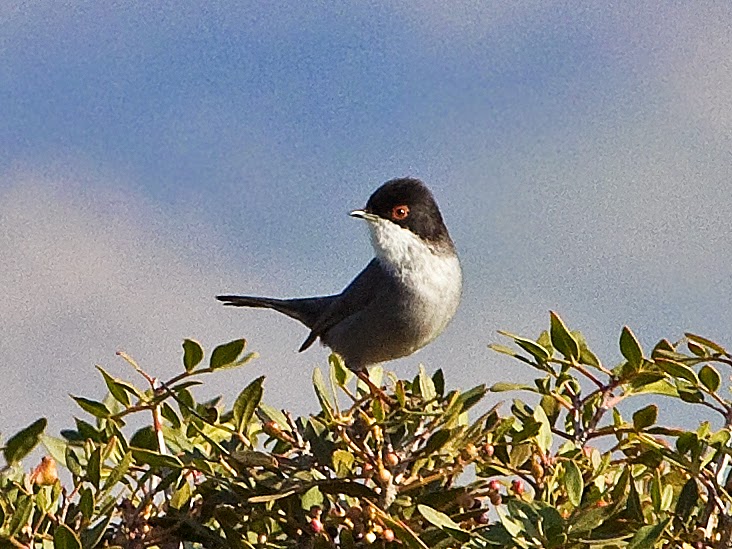Today's target was the Richard's Pipit on Horse Eye Level. The bird has been around for a while although apparently it has not always been easy to locate. However, with it being reported a few times recently and always from the same location we thought it was worth giving it a go.
I picked Dave up and we headed over to the levels. I had never seen a Richard's Pipit before and I cannot say that I was very confident on my ability to identify it. Checking the Collins the night before, it looked very similar to the Tawny Pipit. I was sure that I would be able to tell it from a Meadow Pipit if the two were close together but I was not so sure on my ability if there was only one of them there. A Tawny Pipit should have moved on by now but I was really concerned that my identification would be done on the basis of find a large Pipit and assume that it was the right one. Not really very satisfactory. I needed a picture to take home and study.
Fortunately we arrived at the site to find Bernie Forbes and Dorian Mason already searching the area. Usually I like the birds to myself but this time I was glad of the expertise to help confirm the identification.
 |
| Richard's Pipit |
Bernie found the bird and although it was very distant I managed to get good views. I could see it was not a Meadow Pipit, it looked large and had a thrush like feeding behaviour, running through the grass and lunging at the insects. It was nice to feel confident that you are on the right bird but having Bernie there to explain what I should be looking for helped a great deal.
We had about fifteen minutes watching the Pipit before it disappeared into a dip and failed to re-emerge. It took about an hour of searching before we managed to relocate it, this time much closer to the road, which is where both these pictures were taken. It was still a long way off and the pictures are a massive crop but at least I have my record shot.
 |
| Richard's Pipit |
Whilst waiting for the Richard's Pipit we had good views of Marsh Harriers, Stonechat, Short-eared Owl, and could hear Cetti's Warblers in the reeds.
We headed back via Jevington for another look at the Rough-legged Buzzard. It was there but not feeding this time. It took a few short flights but was heavily mobbed by Crows and Jackdaws.
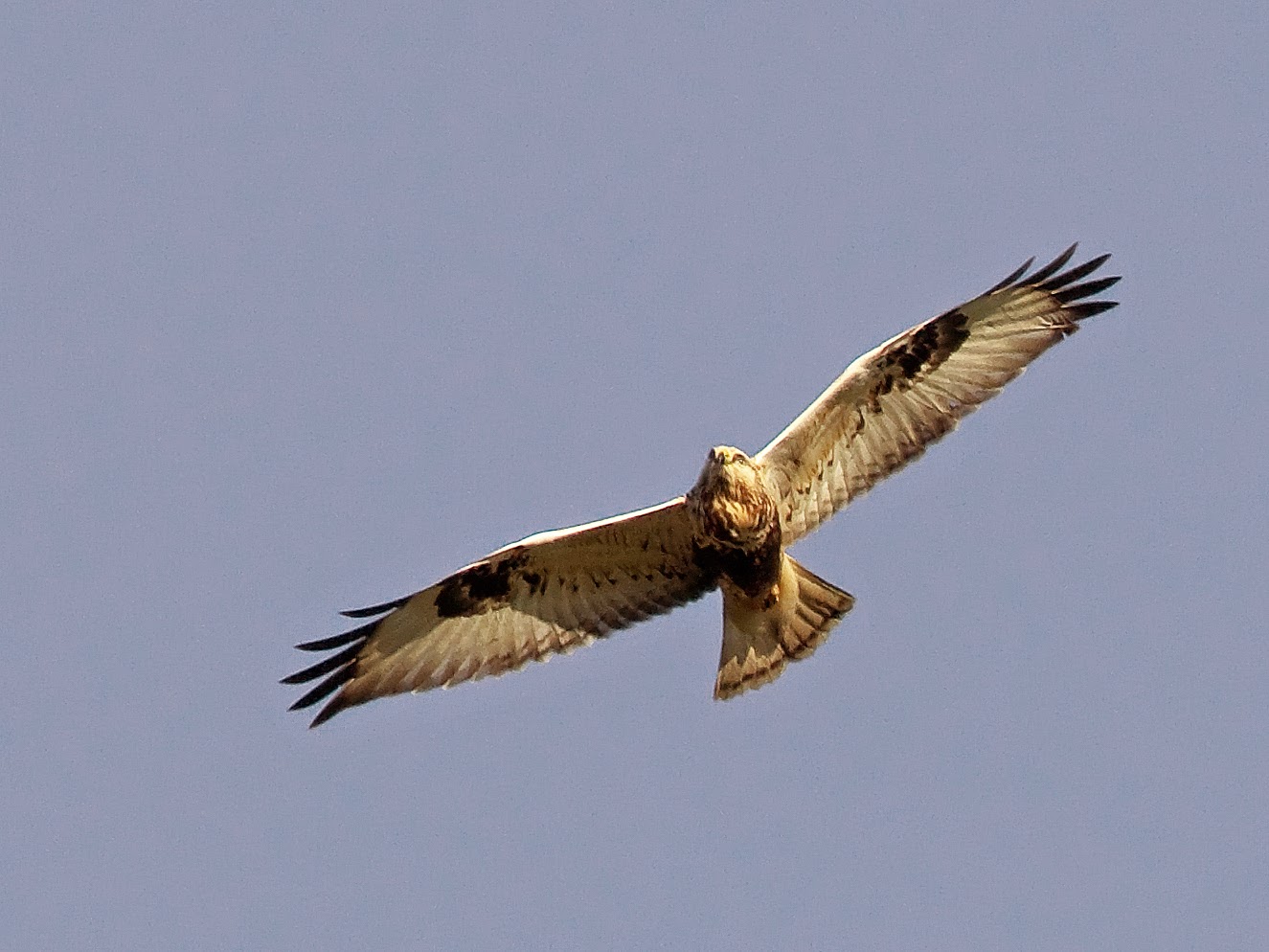 |
| Rough-legged Buzzard |
You certainly could not complain about a shortage of birds. As well as the large flocks of Crows, Rooks, and Jackdaws, there were probably two hundred plus Stock Doves and we also had a flock of Skylarks through that must have numbered over four hundred. There were also three or four Common Buzzards in the area including one particularly brutish looking individual.
 |
| Common Buzzard |
At about half past two, with the light already starting to fade, we headed for home. We made a brief stop at Widewater on the way to see the Mergansers and to have a quick look out over the sea. There were thousands of Gulls stretching along the coast as far as the eye could see. Fortunately the light had gone by then so we did not have to stop and inspect them all searching for a Caspian.
